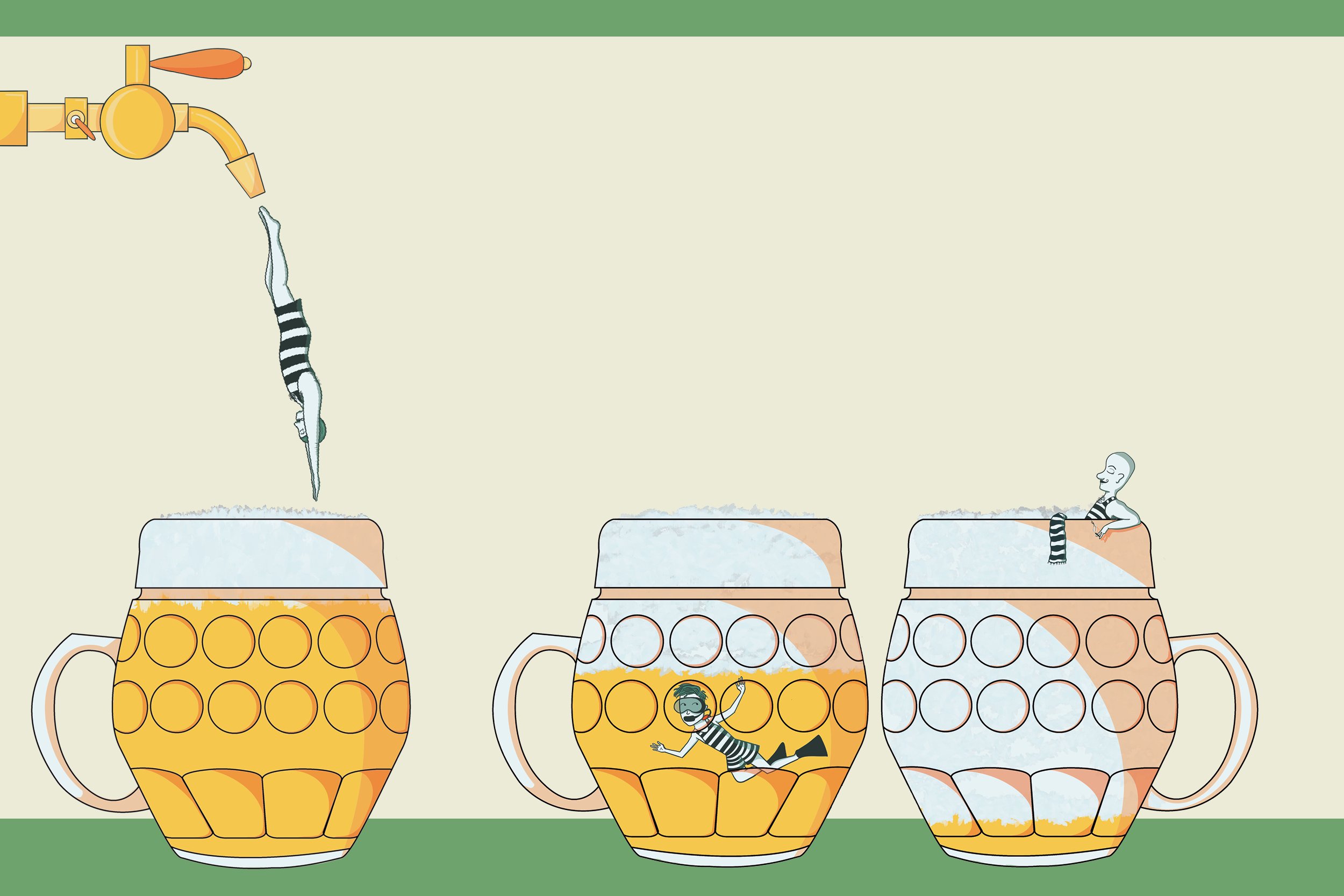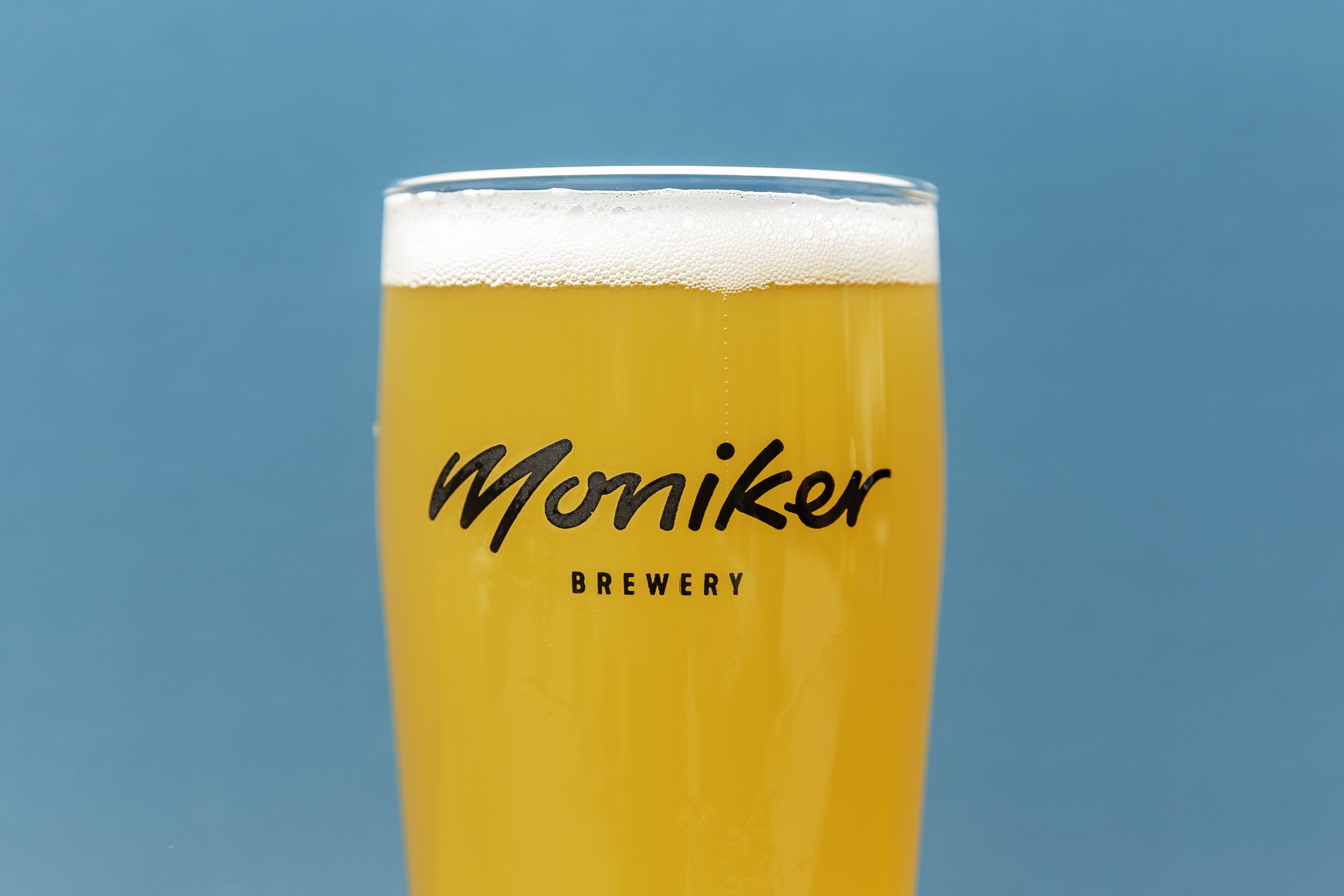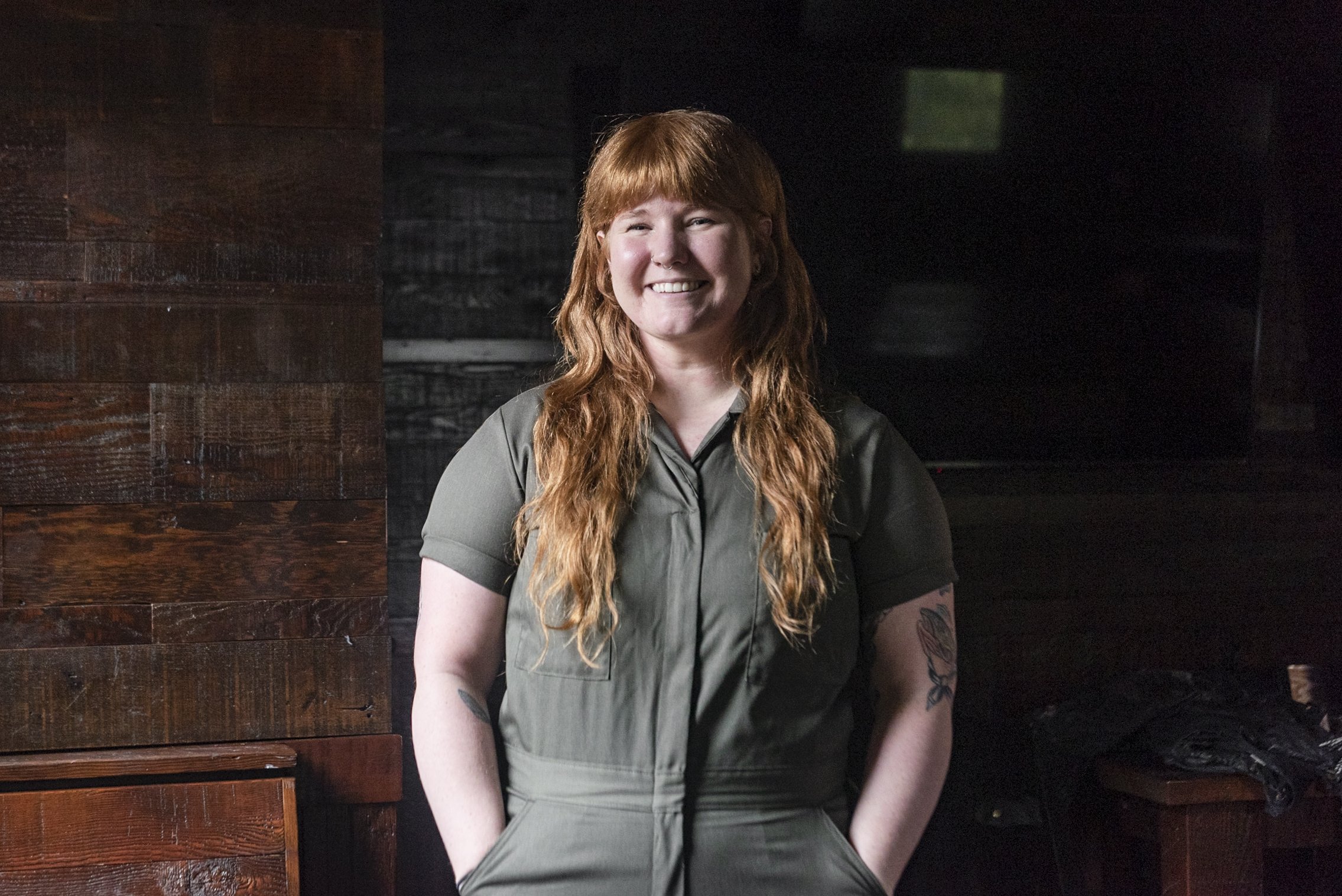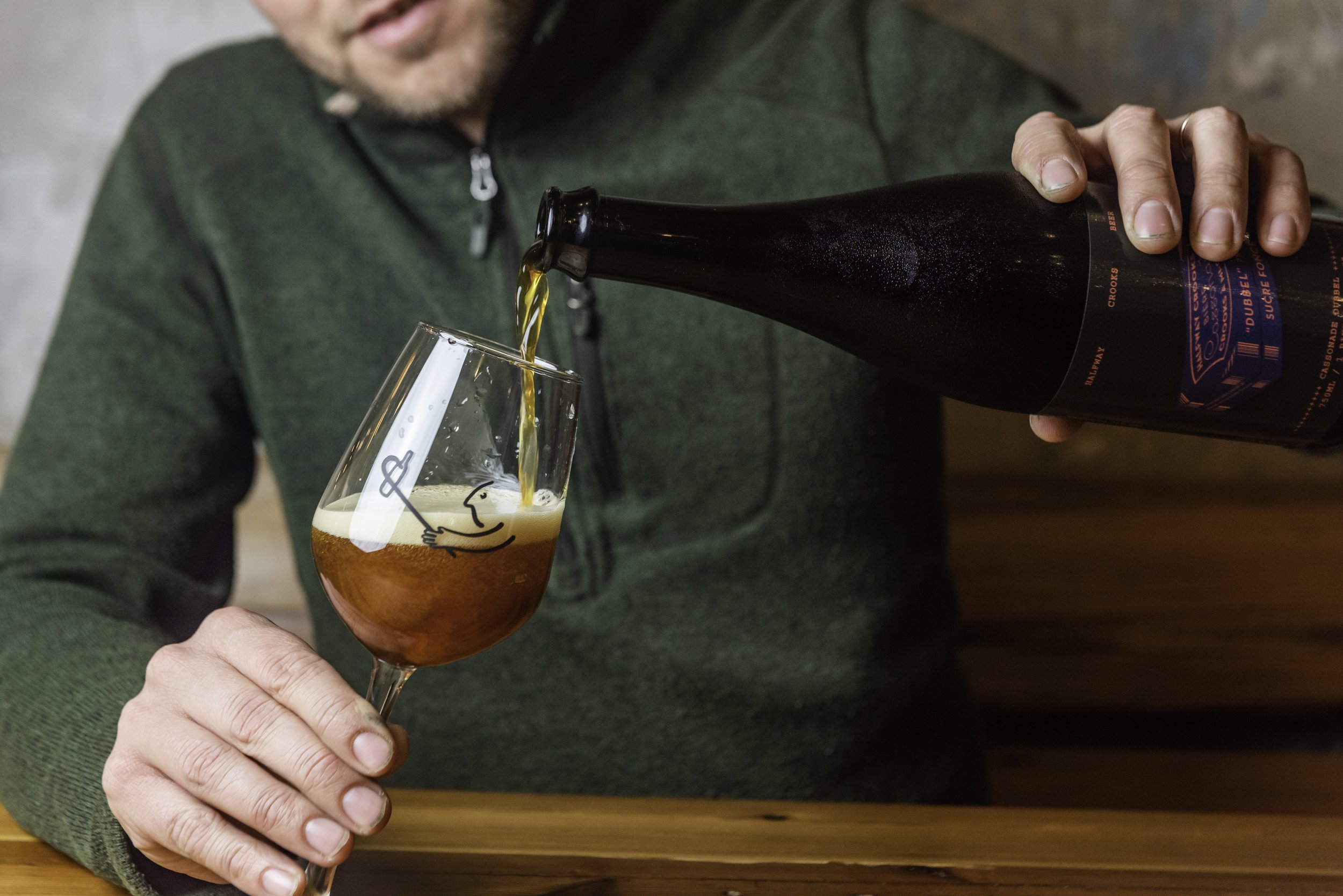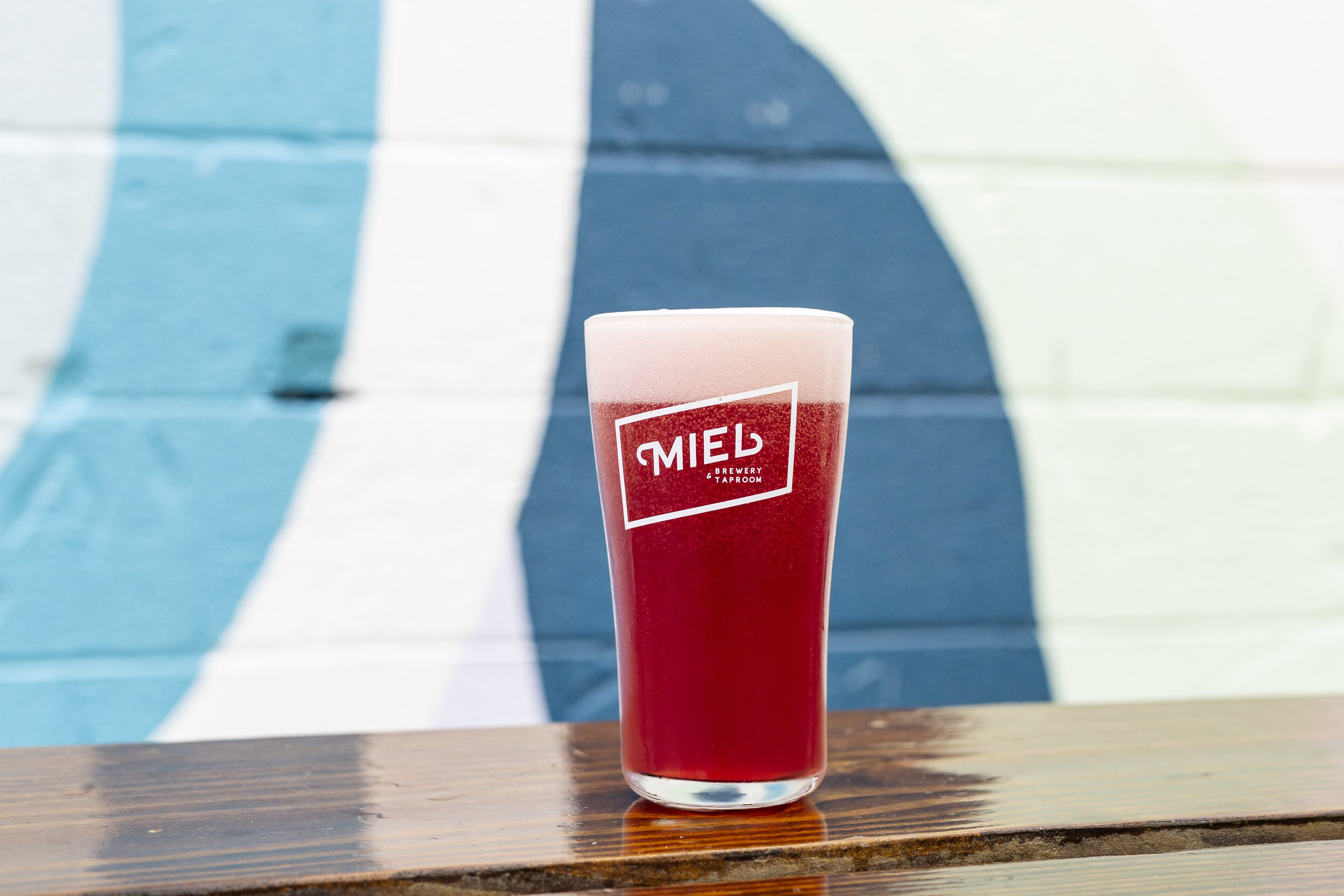Foam Czech
Eric Larkin of Denver’s Cohesion Brewing Company breaks down the brewing, naming, and drinking culture of Czech-style Beer.
Illustrations: Bashel Lubarsky
When Eric Larkin and his wife Lisa went to Prague on their honeymoon, he knew little to nothing about Czech-style brewing. “I had Czech pilsners and lagers and realized that it was different,” says Larkin. “We saw things we hadn’t seen in other places, or expressed in the U.S. either.” Three years later, the couple opened Cohesion Brewing Company, a brewery dedicated to the beer production and service methods of the Czech Republic, in Denver’s Clayton neighborhood. With over 10 years of experience in the beer industry, Larkin explains how everything about this style of beer—including the ingredients, production, naming conventions, and service methods—are distinctly Czech. “When you stack all these small differences up, you can see what makes it unique.”
Making: Water, Malt, Yeast, and Hops
Czech water is soft; Denver’s is hard. “Hard water accentuates certain compounds and flavors,” explains Larkin. “The absence of hardness creates a cleaner profile for the beer.” Cohesion uses a three-stage water filtration and reverse osmosis, getting their level to three to five parts per million (PPM), then adding water back to get the 10 to 15 PPM in total hardness typical of Czech water.
Before modern innovations, Czech brewers used floor malting, a process that imbues the barley with a more intense flavor. While some brewers continue this traditional method today, Cohesion’s malt comes from Troubadour Maltings in Fort Collins, customized to match the undermodified Czech speculations. Cohesion’s yeast is also grown locally, in a Colorado lab. “Yeast is kind of a cheater,” Larkin says. “You can grow it anywhere.”
But unfortunately, the right hops don’t grow in the Centennial State, so Larkin sources Saaz, Kazbek, Sládek, Harmonie, and Saaz Late—whole cone, not pelletized—from the Czech Republic. “The lupulin glands retain more structure if they're not pulverized, which gives a different, delicate, nuanced flavor. Not better or worse, just different.”
brewer eric larkin | Photos: Erin Lettera
Brewing
Because the malts were undermodified, Czech brewers would use decoction mashing to finish the malting process. “They’d add grains and water together at a lower temperature, pull off a third of the mash, boil it, then return it to the mash, which moves the temperature of the whole mash up to where they needed it,” explains Larkin.
Although it’s inefficient, some brewers still use this method, as the resulting caramelization affects the flavor and mouthfeel of the finished beer. “It adds intensity,” says Larkin. “That boiling, even without direct fire, still creates Maillard reaction and caramelization.” Cohesion does one, two, or three decoctions, depending on the recipe.
Fermenting, carbonating, and lagering
Larkin relies on open fermentation, which means the beer ferments without a lid. “Kind of an antiqued technique,” he says. This creates less stress on the yeast, which produces more esters and a more expressive flavor. After four to seven days, the beer moves to a stainless steel horizontal lagering tank. “The yeast settles to the bottom, so you end up with hydrostatic pressure on the yeast,” explains Larkin. “Less pressure gives it a better environment to do its job, creating cleaner flavors.”
Cohesion does natural carbonation rather than forced, capturing the yeast produced by fermentation during the last three to four days of the lagering phase, which takes four to five weeks total.
Cohesion 12º, Pale Lager, Cohesion Brewing Co., Denver, CO
Polotmavý, Half Dark Lager, Cohesion Brewing Co., Denver, CO
Naming
Most Czech breweries keep their beer names simple, noting the color, strength (by degrees Plato), and the brewery. Larkin follows suit: Cohesion 8° is the stolní pivo (light beer), while Cohesion 12°, a světlý ležák (pale lager), is their version of the original Pilsner Urquell. Larkin’s team still tries to offer a select list of basic styles that someone may prefer over a lager, including an IPA, ESB, Saison, something gluten-free, and a non-alcoholic option. He typically outsources these taps, highlighting a rotating list of local breweries.
Pouring
Tapsters, as bartenders are known in the Czech Republic, pour from Czech LUKR faucets with a side-pull mechanism, creating different levels of drinkable foam. “Czechs are insistent on having foam on their beers,” explains Larkin. It’s not just for show—since foam is mostly protein and beer has a variety of compounds, the foam offers different flavors (plus a creamy texture) as you sip. Hladinka, the “perfect pour,” has a thick, creamy head; šnyt, meaning “slice,” has a thicker, slightly bitter layer of foam; and mlíko (“milk”) the rich, moderately sweet, all-foam pour meant to be drunk in one go before the foam settles.
Drinking
Czechs, who drink the most beer per capita in the world, embrace low ABV, with most beers in the 3.5 percent to 5.5 percent range. “You can drink it all day, and people would. You’d have it with breakfast, lunch, and dinner,” says Larkin. “You can’t be drinking 7 percent IPAs if you’re going to drink that much,” says Larkin. Beyond the style, it’s the Czech beer culture that the Larkins sought to bring to the table. “If someone wants to nerd out and get into the details, we can do that,” he says. “But we can also just sit down and have a beer and talk about life. That’s how the Czechs use beer.”

